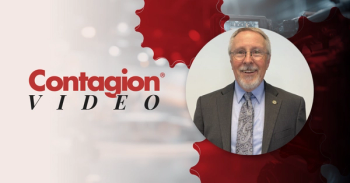
How Clinical and Environmental Factors Impact Legionella Growth
Laura Cooley, MD, MPH, medical epidemiologist, Respiratory Diseases Branch, Division of Bacterial Disease, National Center for Immunization and Respiratory Disease, Centers for Disease Control and Prevention, explains why Legionella is such a challenging pathogen.
Laura Cooley, MD, MPH, medical epidemiologist, Respiratory Diseases Branch, Division of Bacterial Disease, National Center for Immunization and Respiratory Disease, Centers for Disease Control and Prevention, explains why Legionella is such a challenging pathogen.
Interview Transcript (slightly modified for readability)
“The reason that Legionella is such a challenging pathogen is [two-fold]: there’s a clinical reason, and an environmental reason.
From the clinical standpoint, Legionnaires’ disease really looks like a lot of other severe pneumonias. There aren’t many things that really distinguish it, yet, it requires specialized testing, and so, a clinician has to be thinking about Legionnaires’ disease [as] a differential for someone with severe pneumonia, and they have to actually order the right test and then, if the test is positive, that has to be reported to public health, [in order] for a public health response to be initiated and outbreak investigation [to commence]. [It’s important to get] the word out to clinicians to always be thinking about [Legionnaires’ disease] in the appropriate patient population (patients at risk), that Legionnaires’ disease could be a possibility, and then order the appropriate tests, which include urinary antigen tests as well as a deep respiratory specimen for culture on selective media.
The clinical side is one, but the other challenging thing about Legionella is its relationship to the environment. Legionella is found in fresh water, it’s out there [and] doesn’t usually cause a problem in the environment naturally. It [becomes a problem] when it gets into large complex building water-systems with lots of dead-legs and old piping, and biofilms around the pipes, and that kind of thing where Legionella can grow and then be transmitted through aerosolizing devices such as shower-heads, fountains, [and other mechanisms] to susceptible populations. Legionella growth and transmission can be prevented in building water-systems, but building owners and managers need to know that, and a lot of them don’t; and so, that’s the challenge too, getting the message out that routine maintenance of building water-systems can actually prevent disease.
On the response side, it really requires a special skill-set and some resources that aren’t always readily available to investigate an outbreak of Legionnaires’ disease. And so, that can be a challenge, maintaining building and maintaining capacity at state and local levels to investigate an outbreak of Legionnaires’ disease.”
Newsletter
Stay ahead of emerging infectious disease threats with expert insights and breaking research. Subscribe now to get updates delivered straight to your inbox.




















































































































































































































































































